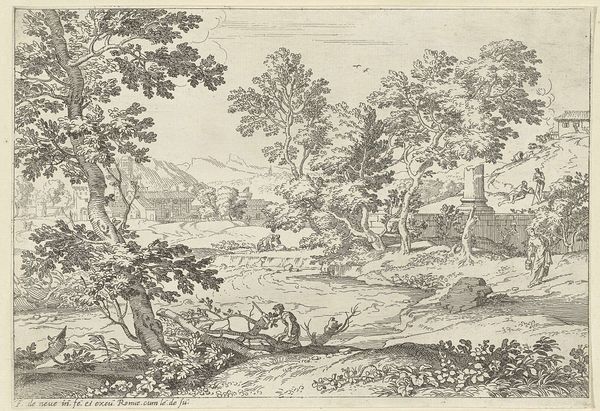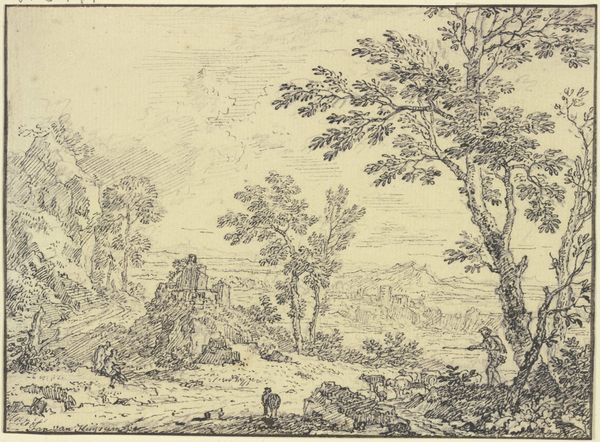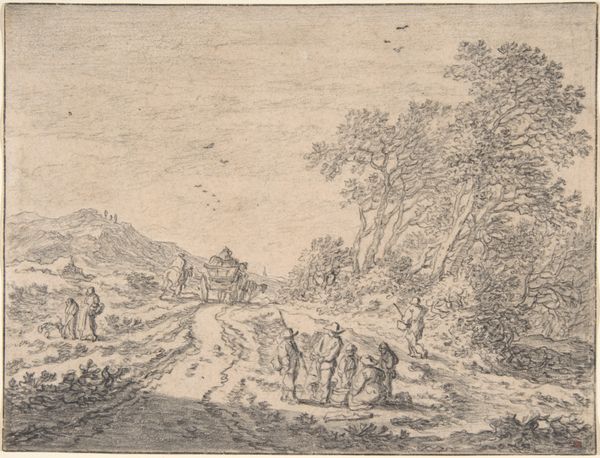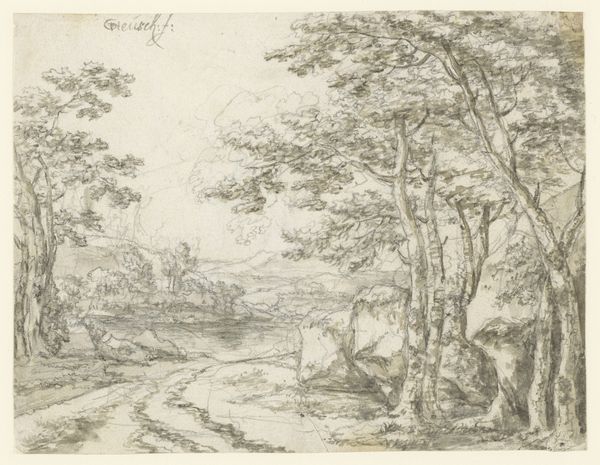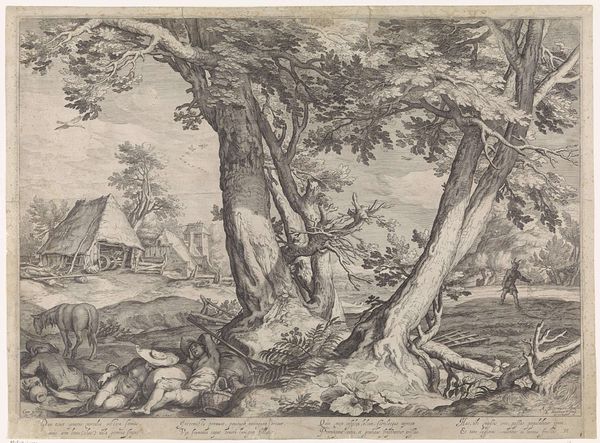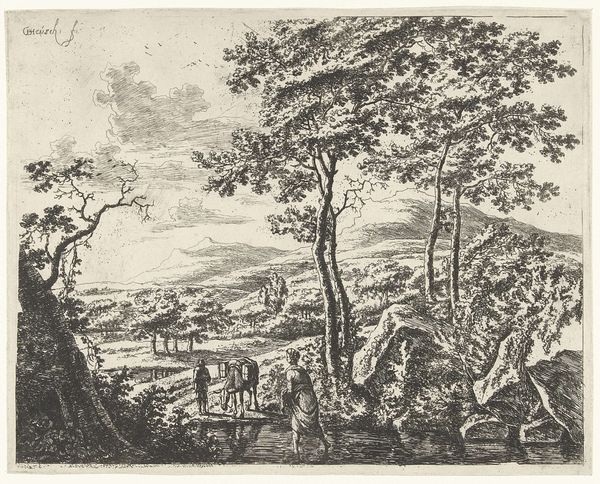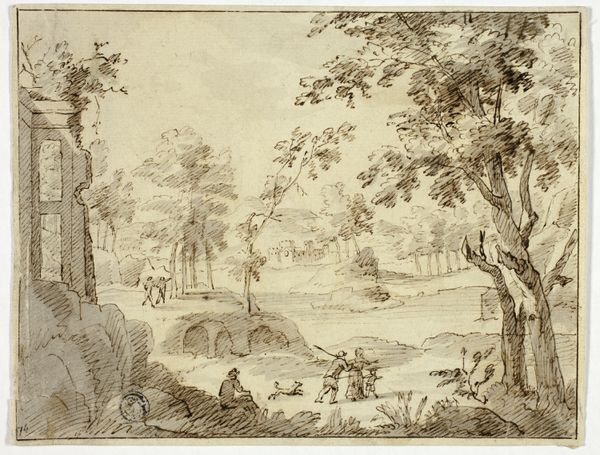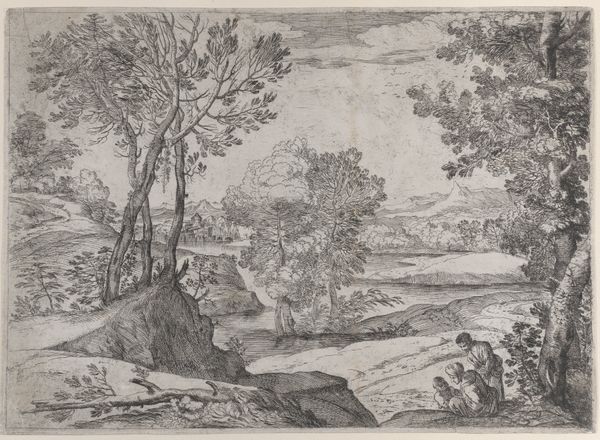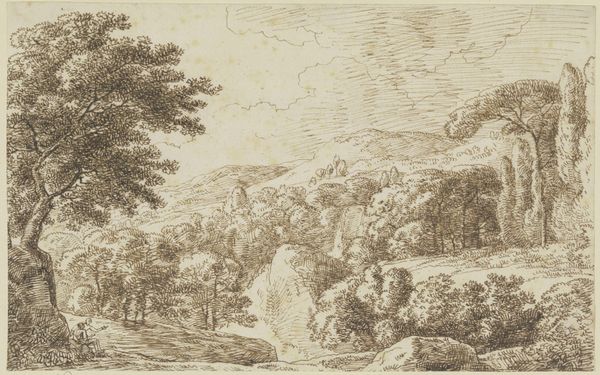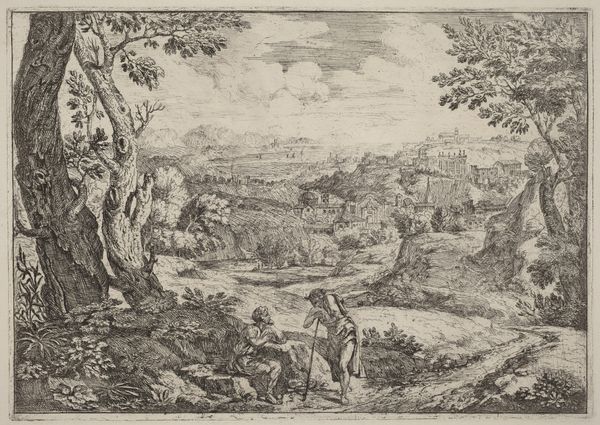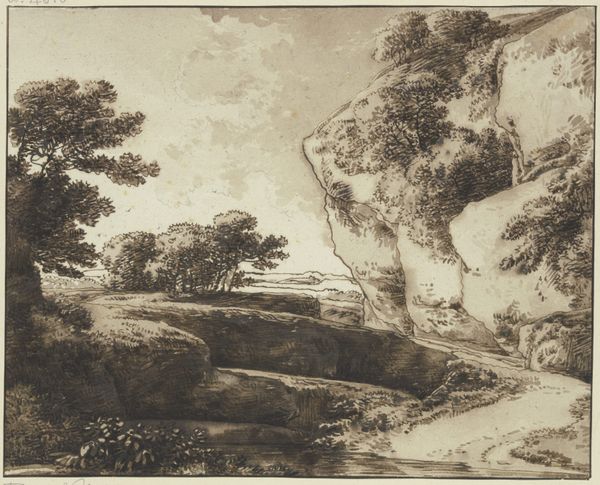
drawing, etching, paper, ink
#
drawing
#
dutch-golden-age
#
etching
#
landscape
#
etching
#
paper
#
ink
Dimensions: height 156 mm, width 208 mm
Copyright: Rijks Museum: Open Domain
Willem de Heusch rendered this hilly, wooded landscape with pen and brown ink around the mid-17th century. The trees, framing the vista, are not merely botanical studies but symbols deeply rooted in cultural memory. Trees have been potent symbols throughout history, representing life, growth, and connection to the earth, from the Tree of Life in ancient mythologies to sacred groves venerated by various cultures. Observe the way de Heusch’s trees reach skyward, embodying aspirations for transcendence, yet remain firmly grounded. Consider how these arboreal forms reappear in other works, like the stark, windswept trees in Caspar David Friedrich's Romantic landscapes. Their evocation of the sublime resonates across centuries. It seems these symbols are not simply observed, but felt, engaging viewers on a deep, subconscious level. The motif of trees continues to evolve, their symbolic power a testament to the enduring human connection to the natural world.
Comments
No comments
Be the first to comment and join the conversation on the ultimate creative platform.

